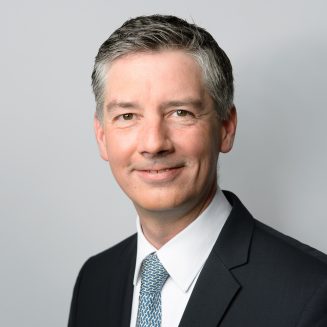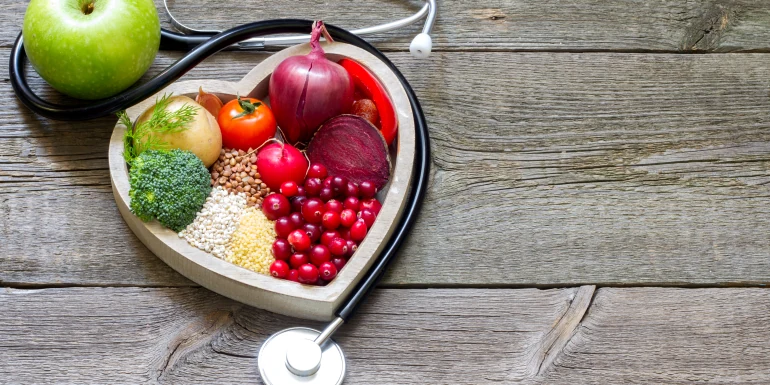
Cardiac anatomy - a masterpiece
The heart is the motor which drives our body. What does the heart’s anatomy look like? And how does it work? A look at the most important human organ.
Clench your hand into a fist. Your heart is about this size. Place your hand on your chest, slightly to the left of your sternum. This is where the heart lies in the chest, embedded between the two lungs. The pericardium, which surrounds the heart, is comprised of connective tissue. It holds this constantly active organ in place.
What does the heart’s anatomy look like?
Let us take a closer look at the heart. The organ is composed of hollow muscle and is lightweight, weighing only 300 grams. It is nourished and oxygenated by the coronary arteries on its surface. The heart is composed of muscle fibres and a cardiac skeleton, which is predominantly composed of connective tissue.
Two pumps are present within the cardiac muscle which work at the same rate. These lie on the left and right sides of the heart respectively and are separated only by a thin septum. Each half of the heart is comprised of an atrium and a ventricle. The right atrium collects deoxygenated blood from the systemic circulation, while oxygenated blood from the lungs flows into the left atrium. Four heart valves ensure that blood flows in the right direction.
Pacemaker for life
The sinus node in the right atrium generates the electrical impulse for the heartbeat, and is the natural pacemaker of the heart. The sinus node is comprised of cells which specialise in electrical stimulation. The impulse travels from the sinus node to the AV node, which lies at the edge of the ventricle, from where it is carried further by conducting fibres which stimulate contraction of cardiac muscle in a coordinated manner.
How many heart valves does our pump contain?
The heart has four valves, each of which functions like an outlet. Two atrioventricular valves are present between the atria and ventricles. One of these is called the mitral valve, the other the tricuspid valve. Two more valves are present between the ventricles and the pulmonary and systemic circulation: the semilunar valves. One of these is called the aortic valve, the other the pulmonary valve. Cardiac valves may become diseased during one’s lifetime and must then be operated upon. They are then replaced by mechanical or biological cardiac valves (prostheses). As after all heart operations, patients must undergo rehabilitation and are administered medication to aid recovery.
Functioning of the cardiovascular system
The heart together with blood vessels forms the cardiovascular system. There are two distinctive circuits: the pulmonary circulation (smaller circulation) and the systemic circulation (larger circulation).
Oxygenated blood flows from the left atrium to the left ventricle when the heart muscle relaxes. Deoxygenated blood flows simultaneously from the right atrium to the right ventricle. As the heart contracts yet again, blood is pumped from the left ventricle into the aorta and from the right into the pulmonary artery. Blood is carried from the aorta through arteries, arterioles and capillaries to the body’s cells, where it gives off oxygen and nutrients to tissues, while absorbing carbon dioxide and "waste materials". Deoxygenated blood is carried by veins to the right atrium, from where it enters the right ventricle.
- The heartbeat is triggered by the heart itself. An impulse is generated approximately 70 times per minute.
- The human heart pumps about 10000 litres through the body in 24 hours.
- The organ beats every 0.8 seconds on an average.
- It pumps about five litres of blood per minute through the body.
- The heart beats about 2 to 3 billion times during one’s lifetime.
- The heart of a crying baby beats 200 times a minute.
- The velocity of flowing blood is approximately 1 meter per second.
Deoxygenated blood in veins
While the arteries carry oxygenated blood, deoxygenated blood is carried by veins, the exception being the pulmonary artery and pulmonary veins. The former carries deoxygenated blood to the lungs and the latter carry oxygenated blood from the lung back to the heart.
Blood is carried by the pulmonary artery from the right ventricle to the lung. This artery divides into smaller arteries and arterioles and eventually into the capillaries of the lung. The blood gives off its carbon dioxide in the lung and takes up oxygen. Blood is carried back to the left atrium by pulmonary veins.
Systole and diastole
Diastole or the relaxation phase is the part of the cardiac cycle during which the two cardiac chambers dilate. Systole or the contraction phase is the part of the cardiac cycle during which the heart muscle contracts while pumping.
What gives rise to blood pressure?
Blood pressure is the pressure of blood in a blood vessel. It describes the force per area exerted by blood on vessel walls of arteries, capillaries and veins. Blood pressure is essential for blood flow and normal blood pressure is vital for life.
Diseases of the cardiovascular system
Several diseases of the cardiovascular system are known to occur. The best known of these include heart failure, narrowing of coronary vessels, cardiac arrhythmia and hypertension. These may trigger heart attacks or strokes. These risks may be minimised with the right lifestyle (exercise, healthy diet and avoidance of stress).

Dr Robert C. Keller is the Managing Director of the Berne-based Swiss Heart Foundation. He has long-standing experience in the field of cardiovascular diseases and heads up the areas of research and prevention at the foundation. Dr Keller provided the editorial team with advice.



Newsletter
Find out more about current health issues every month and get all the information you need about our attractive offers from all Helsana Group companies * delivered by e-mail to read whenever it suits you. Our newsletter is free of charge and you can sign up here:
We did not receive your information. Please try again later.
* The Helsana Group comprises Helsana Insurance Company Ltd, Helsana Supplementary Insurances Ltd and Helsana Accidents Ltd.